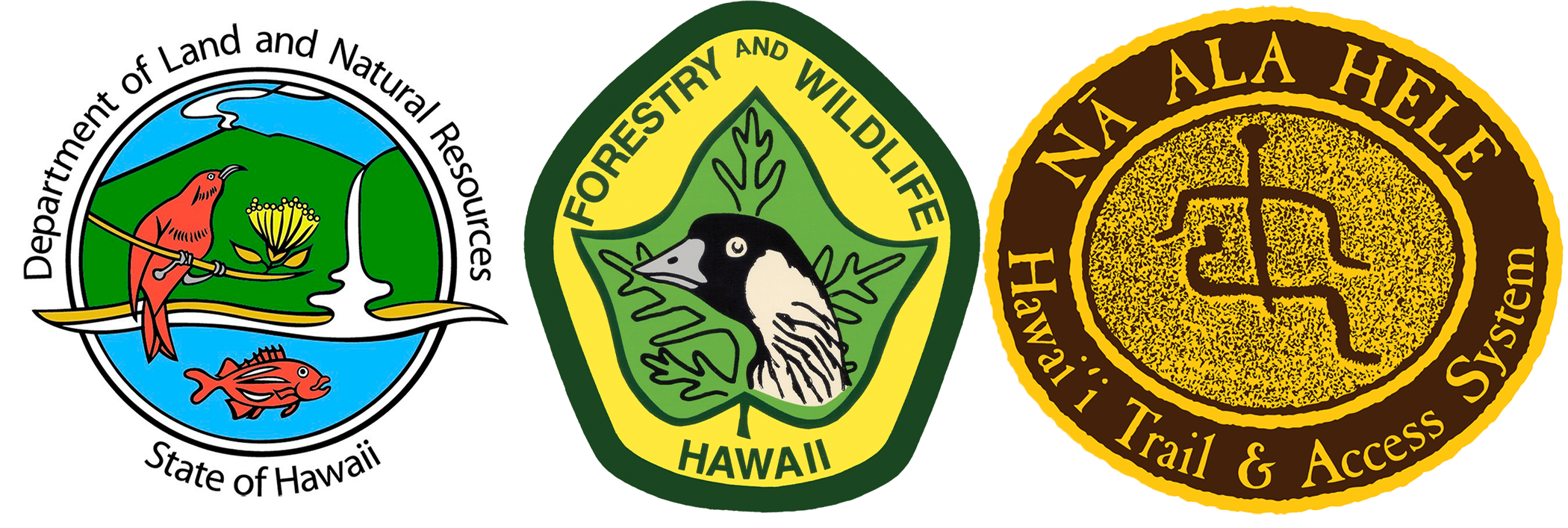Salt Pond Beach Park offers a calm bay, protected by a stretch of reef which serves as a natural breakwater. Allowing a view into the adjacent salt ponds in addition to the ocean views, this site provides opportunity to observe sea birds and wetland birds. Between the months of December and April, this beach is ...
Read More Salt Pond Beach Park
Archives by Month:
A moderate challenge, this 4.8 mile forested loop hike begins and ends in the Keaīwa Heiau State Recreation Area. The ʻAiea ridgeline offers some of Oʻahu’s best opportunities for spotting native forest birds such as the Oʻahu ʻamakihi, Oʻahu ʻelepaio, and ʻapapane as well as some exciting introduced species, including the endangered Mariana swiftlet and ...
Read More ʻAiea Loop Trail
This urban park provides an easily accessible opportunity to view Honolulu’s many indigenous and introduced birds. This is a popular spot to see Manu-o-Kū (white tern) and rose-ringed parakeets.
This protected lagoon provides habitat for a variety of native and endangered waterbirds. The adjacent Kuliʻouʻou Beach Park is a family-friendly viewing point for the lagoon. The calm waters of the lagoon offer a peaceful backdrop for birds and parkgoers alike.
This picturesque point features scenic views of an offshore sea arch, offshore seabird sanctuary, and coastline. The point’s proximity to the seabird sanctuary offers a convenient opportunity for viewing passing seabirds, especially ʻuaʻu kani (wedge-tailed shearwater), ʻā (red-footed and masked boobies), and the occasional noio koha (brown noddy).
Waimea Valley features botanical gardens, important cultural sites, a waterfall, and more. Managed by non-profit organization, Hiʻipaka LLC, Waimea Valley is accessible to the public with the purchase of admission. The valley is home to around 15 of the endangered ʻalae ʻula.
Keālia Pond National Wildlife Refuge is nestled between Kīhei and Ma‘alaea towns and features a coastal salt marsh habitat. Start your trip at the Visitors Center to learn all about the area and its feathery inhabitants. Nearby, the Kanuimanu Ponds offer an up-close view of waterbirds. A must-see is the Coastal Boardwalk that offers a ...
Read More Keālia Pond National Wildlife Refuge
A side trip on the road to Hana is always an adventure! The Wai‘ānapanapa State Park is a perfect rest stop steeped in Hawaiian culture. The off-shore rocks and cliffs provide excellent sightings of shore and seabirds, viewable from ancient shoreline trails.
Kahakapao Recreation Area is a mountain biker’s paradise. An extensive network of hiking trails, biking trails, and biking skills amenities are favorites of the Upcountry community. A mix of native koa/‘ōhi‘a and exotic trees provides a unique birding experience.
The Polipoli Springs State Recreation Area hosts a diversity of outdoor activites including hiking, camping, and hunting. The large Recreation area encludes several hiking trails that take you through various native and exotic forest habitats. As such, a wide variety of birds can be seen in this area.
Named after Hawai‘i’s first Superintendent of Forester, Ralph Hosmer, this grove of eucalyptus (planted by Ralph in 1909) and the adjacent nature trail though sub-alpine shrubland provides an excellent venue to sign Hawai‘i’s colorful native forest birds.
High up on the cliffs of Haleakalā Crater is the Leleiwi Overlook. On the short trail to the overlook, you may see nēnē and other native and common birds. From the lookout, you may glimps soaring tropic birds and seabirds returning to their burrows at night.
Some of the best bird watching on the island can be found at ʻAimakapā Fishpond. This wetland area provides habitat for an amazing variety of birdlife, including some species that are not found anywhere else in the world. Other species can be found spending the winter months in the fishpond, having traveled to Hawaiʻi from ...
Read More Kaloko-Honokōhau National Historic Park
The Puʻu Waʻawaʻa Forest Reserve is home to a diverse dry ʻōhiʻa forest mixed with many endangered and rare plants. The ʻŌhiʻa Trail takes you through some of these forested areas where a wide variety of native and exotic birds have found a home. Be sure to check in at the Hiker Check-in Station for ...
Read More Pu‘u Wa‘awa‘a ʻŌhiʻa Trail
A nice family trail, the Puʻu Huluhulu trail network features several short hikes atop a forested hill, surrounded by black lava from an 1843 flow. A mix of koa forest and dry mixed forest, this puʻu (hill) is a good place to view native forest birds seeking refuge from an otherwise stark lava landscape.
